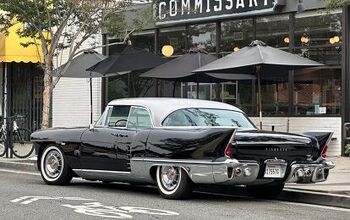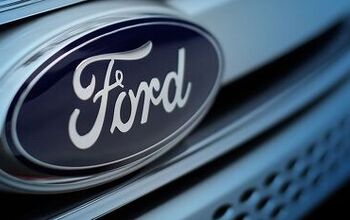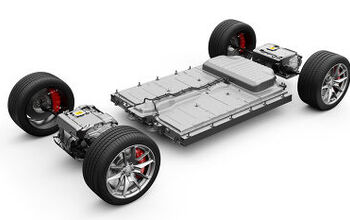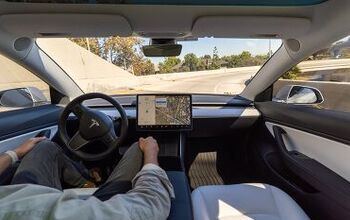QOTD: Taking Matters Into Your Own Hands?

It’s late 1995, and your author is blundering through his first year of high school. Gangly, awkward… frankly, the whole thing is best left unremembered. Beyond those school walls, however, world events were coming to a head. O.J. apparently didn’t do it, Quebec almost became a country, the Unabomber’s manifesto made it to print, and in two assembly plants in Ontario and Delaware, big things were taking place between the front seats.
There, Chrysler Corp was busy outfitting two variants of its 1996 model-year LH cars — the Dodge Intrepid ES and Eagle Vision TSi, to be exact — with a new type of transmission. Called Autostick, it allowed the driver of Chrysler’s sportiest cab-forward sedans to make the most of their four forward gears.
This innovation was of great interest to yours truly, as up until then boring automatic transmissions all featured individual gears on the selector, and selecting anything other than “D” was something you only did when climbing Mt. Washington. In the top-flight 3.5-liter Dodge and Eagle sedans, though, one could toggle the shift lever side to side when placed in the rearmost position, ascending or descending through the gears.
Autostick quickly proliferated through the upper echelons of the Chrysler stable, becoming a signature feature. As the decade ended and a new century dawned, manual shift modes began appearing everywhere, usually in a forward/back orientation in a separate gate to the left of the Drive position, surrounded by a brushed metal trim plate. They made for a sexier and more premium-looking console, and indeed at the time these were usually the domain of higher-end makes.
Transmissions also added cogs as the years passed, boosting the feature’s limited sporting potential. Sadly, traditional slushboxes made the feature more useful in theory than in practice, and it wasn’t until CVTs and DCTs began popping up that a driver could accomplish their manual shift action without a frustrating lag that compelled them to never try such a thing again. In a CVT-equipped vehicle, using manual mode is often the only way to wring out any fun, and usually just for building revs going into a corner. In a dual-clutch vehicle, flappy paddles are your friend.
Manual shift modes are now ubiquitous with the automatic transmissions found in most of today’s new vehicles. The last time I piloted my mom’s Jeep Patriot, the little CUV’s Autostick got a workout (boredom, you see). Chances are, the vehicle you’re driving now offers some form of manual shift mode, which leads to today’s question: do you ever use the feature?
Like, ever?
Does the feature birthed a quarter century ago in a pair of front-drive domestic sedans get put to use even on scarce occasions, or is it merely a bygone selling point that hold no value or utility for you, the driver?
[Image: Chrysler Corp.]

More by Steph Willems
Latest Car Reviews
Read moreLatest Product Reviews
Read moreRecent Comments
- V8fairy Not scared, but I would be reluctant to put my trust in it. The technology is just not quite there yet
- V8fairy Headlights that switch on/off with the ignition - similar to the requirement that Sweden has- lights must run any time the car is on.Definitely knobs and buttons, touchscreens should only be for navigation and phone mirroring and configuration of non essential items like stereo balance/ fade etc>Bagpipes for following too close.A following distance warning system - I'd be happy to see made mandatory. And bagpipes would be a good choice for this, so hard to put up with!ABS probably should be a mandatory requirementI personally would like to have blind spot monitoring, although should absolutely NOT be mandatory. Is there a blind spot monitoring kit that could be rerofitted to a 1980 Cadillac?
- IBx1 A manual transmission
- Bd2 All these inane posts (often referencing Hyundai, Kia) the past week are by "Anal" who has been using my handle, so just ignore them...
- 3-On-The-Tree I was disappointed that when I bought my 2002 Suzuki GSX1300R that the Europeans put a mandatory speed limiter on it from 197mph down to 186mph for the 2002 year U.S models.


































Comments
Join the conversation
The nicest part of those LH models wasn't the shifting, but the longitudinal placement of the engine in a FWD car. They expected to make those full size cars AWD, but never did. In the meantime, the engines were much easier to work on, and the next best thing about the 3.5 engine was the torque curve that made the manual shift option largely unnecessary.
I have an autosticky gate on my Volvo XC60. I use it going down steep, narrow mountain roads. For the first couple miles, anyway. After that, the transmission's grade logic figures it out, and if you pop it over into D it downshifts automatically whenever you start to pick up excess speed. I suppose it would be useful to get a quicker downshift on heavy acceleration, but with a 6-speed that's imperceptible in daily operation, I honestly wouldn't know how many cogs to drop. Just mash the pedal and go.